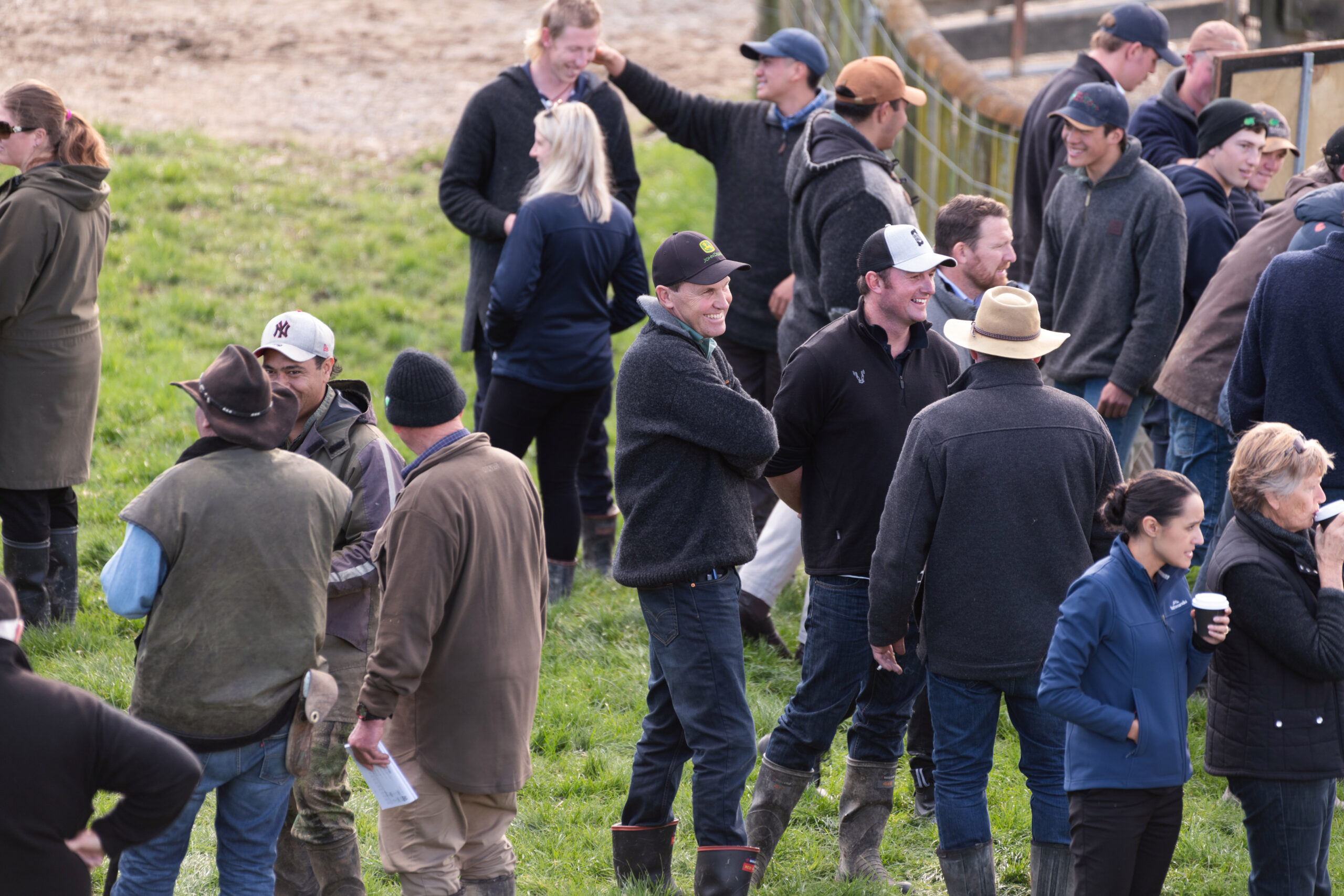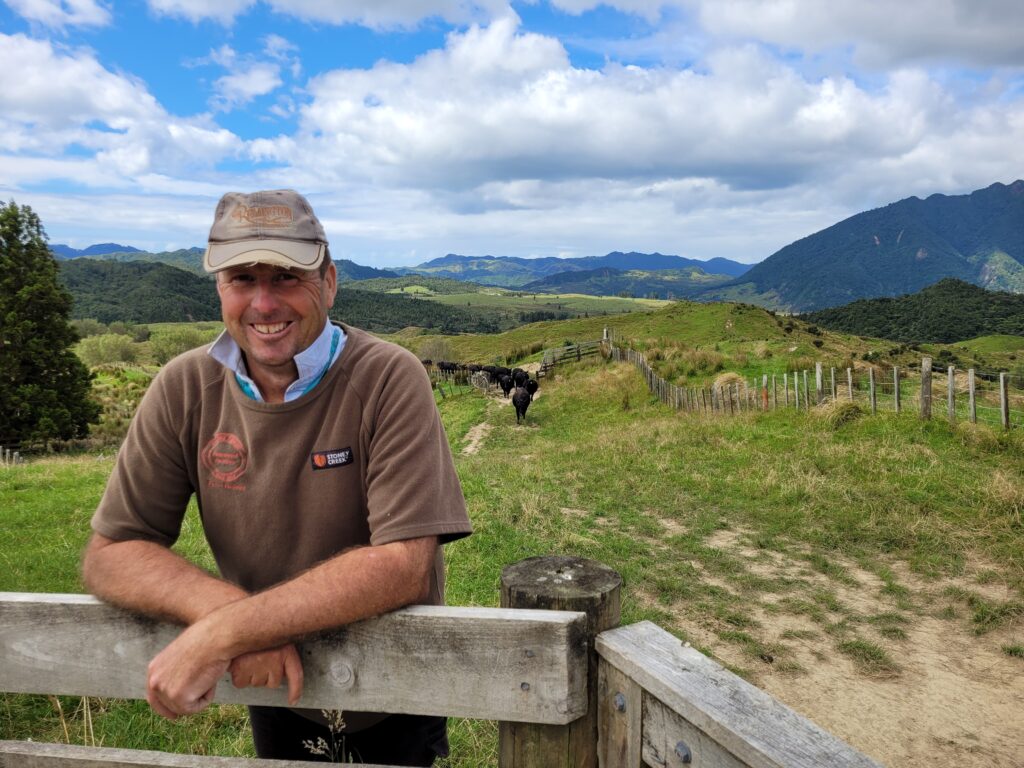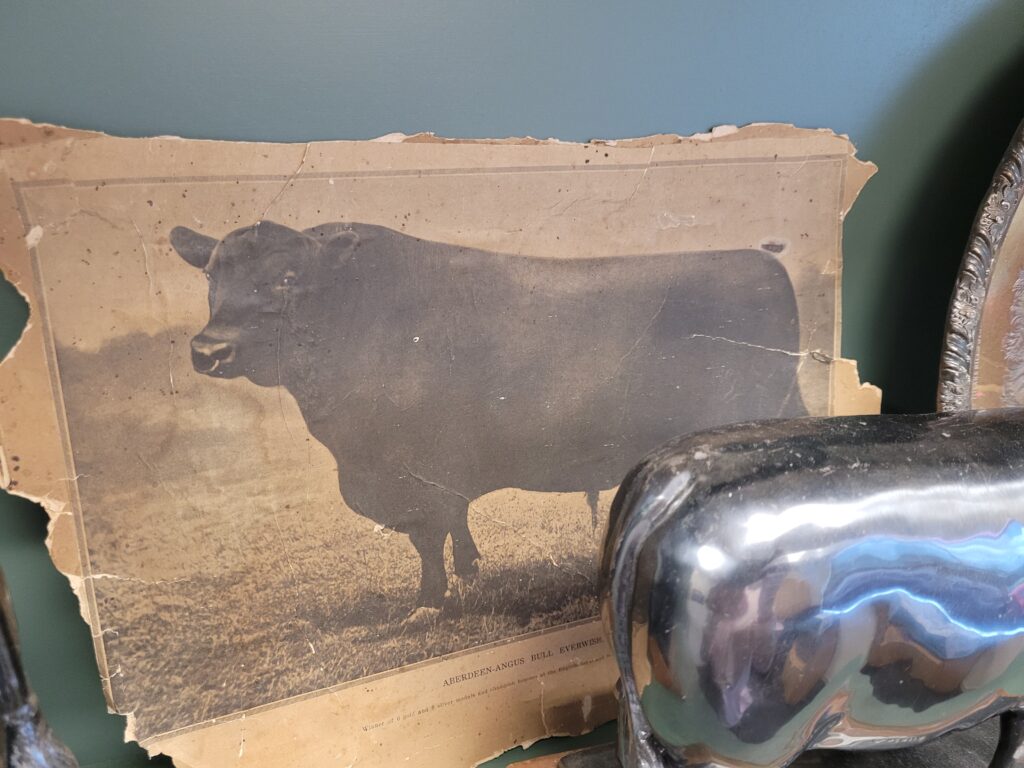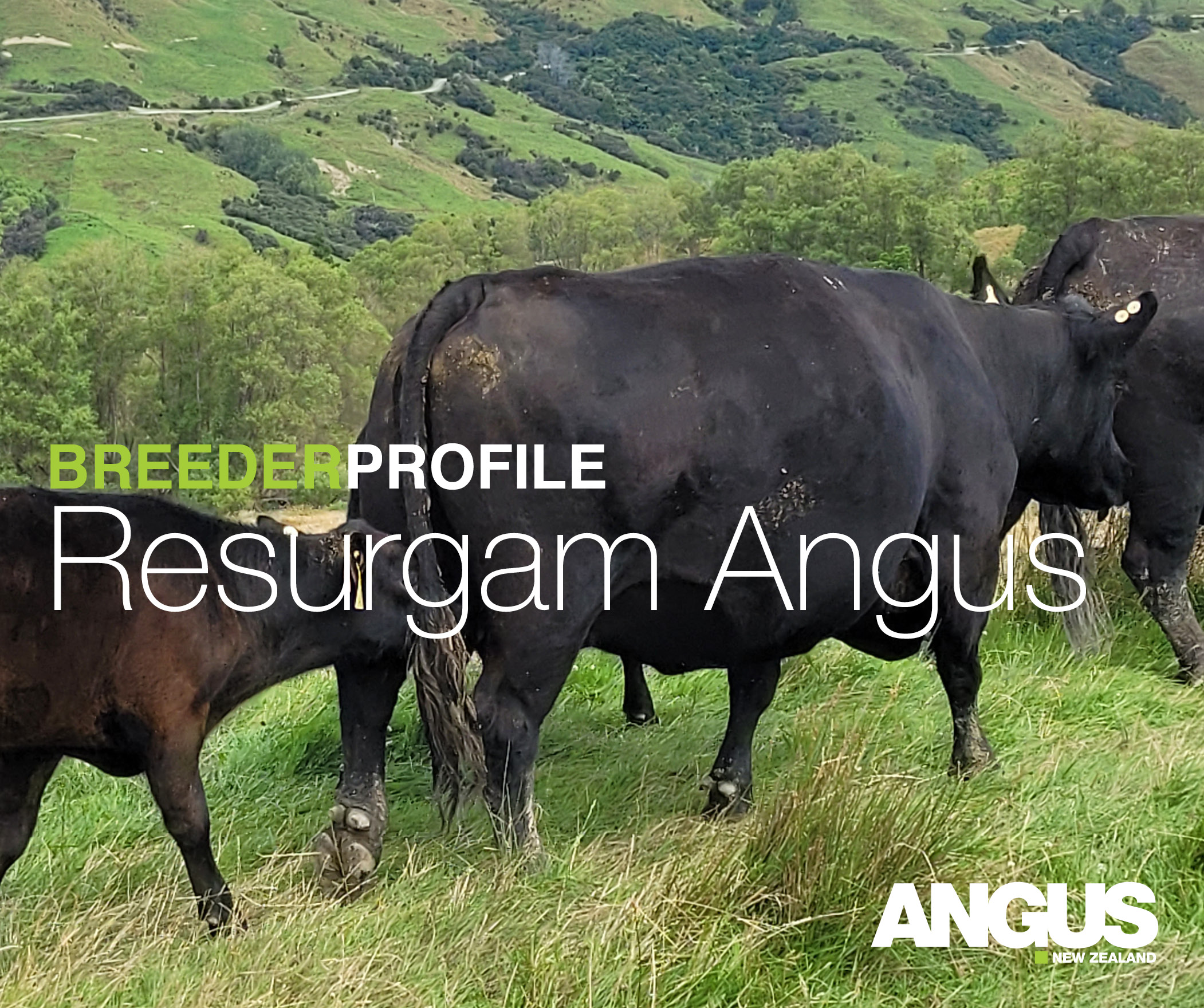
RESURGAM
ANGUS
FOR BETTER BALANCED BEEF
Breeder Profile:
Sean & Jodi Brosnahan
Words by
Tim Fulton
Breeder traces his Foundation Cows back to Scottish Ancestry

A fascination with pedigree has led Sean Brosnahan at Resurgam Angus to the origins of his herd, right back to the earliest Scottish imports.
Scouring old herd books, the East Coast breeder has identified all of Resurgam’s foundation cows.
“A number of those cows passed through different herds as well as the bulls. It’s about understanding where our animals come from so we can work out where we’re going and what we’re doing,” he says.
Some of the Resurgam cows and bulls were imported from Scotland in the late 19th century or early 20th and those imports continued steadily until the early 1970s.
“I’m working with a guy in Scotland and he’s just bought a near complete set of Scottish herd books that will fill the gaps. I just need AngusNZ herd books volume 1 to 5 and 12 to 19 to complete the New Zealand side. It’s fascinating how closely connected and inter-related those old herds were that established the Aberdeen Angus of New Zealand.”
At one point Sean identified six sire lines in his herd that he really liked. All of those sire lines went back to the same bull, Mulben Embassy, imported in April 1939.
“It just shows the lines are still quite related in blood,” Sean says.

New Zealand Angus a century ago had characteristics that are just as valuable now, he says.
“The 1920s is probably very similar; just a moderate-type animal that’s easy fleshing with good conformation and really good structure. That’s still what we’re looking for today.”
If there’s any major improvement in modern Angus it’s probably in the feet, he says.
Resurgam Angus maintains a 250-head registered Angus herd plus 100-head commercial Angus cows. The home farm (Resurgam) consists of 215ha of grass pasture where bulls are sold from and a mob of cows are used for tidying up pasture. The cows are run in conjunction with sheep under an integrated grazing system on Waitangihia Station in Waikura Valley.
The research has been time-sapping but Sean enjoys the challenge: he’s visited the AngusNZ “lock-up” archive in Feilding to fill in gaps in his records and also collected plenty of photos of individual animals.

Some of the AngusNZ archive at the AngusNZ Office, PBB Building.

“I do a bit and then I need to have a break from it before I go back and do more,” he says. Sean stepped up his research in the past 12 months, partly because 2022 was especially wet in Waikura Valley. By wet, he means close to four metres of rain in the last calendar year, compared to the average of three metres.
Sean has captured his research in a program that records pedigree data and he’s now considering how he might be able to move it to a more user-friendly platform.

